The Trailer: The six political states of Michigan
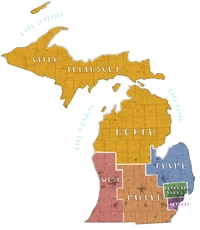
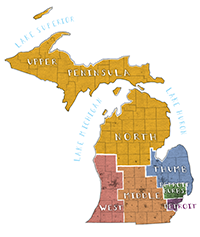
First in a series on swing states
How did Michigan become a defining swing state of the Trump era? Some of it had to do with history, both the state’s 20-year stretch of Democratic wins and the revived conservatism of Detroit’s suburbs. Plenty had to do with the margin — fewer than 11,000 votes out of nearly 4.8 million cast and counted. Donald Trump filled in the gaps, arguing that his opposition to the NAFTA free-trade deal had broken the old Democratic coalition, as the state’s Democrats seemed to warn it could when they gave Bernie Sanders a narrow primary win over Hillary Clinton.
But Trump’s appeal in the state may have been overrated. As about 280,000 disgruntled Michiganders picked third-party candidates, he won with just 47.3 percent of vote. (Fewer than 70,000 voters backed third parties in 2012.) Trump did not hold rallies in the state during the 2018 midterms, when Democrats swept every statewide office, picked up two House seats, and passed ballot measures that legalized marijuana and expanded voting rights.
The Trump campaign is still advertising in Michigan, but both parties now view the state as harder than Pennsylvania or Wisconsin, the other crucial 2016 states, to keep in the Republican camp. On her way to defeat, Hillary Clinton underperformed in Detroit, shed the party’s traditional strength in smaller cities and made uneven gains in suburbs.
Democrats have spent nearly four years compensating for it. The politics of the coronavirus, which found Republicans encouraging protests of Democratic Gov. Gretchen Whitmer’s emergency orders, revealed how the president’s Michigan coalition was highly visible but heavily outnumbered. But some places Democrats used to count on have moved right, despite the president’s swooning poll numbers.
“In places like downriver, south of Detroit, and places like Bay City and Saginaw, there are lots of Trump supporters — Gods, guns, and guts type of Democrats,” said former state GOP chairman Saul Anuzis. “The higher-end manufacturing communities came out strong for him, too.”
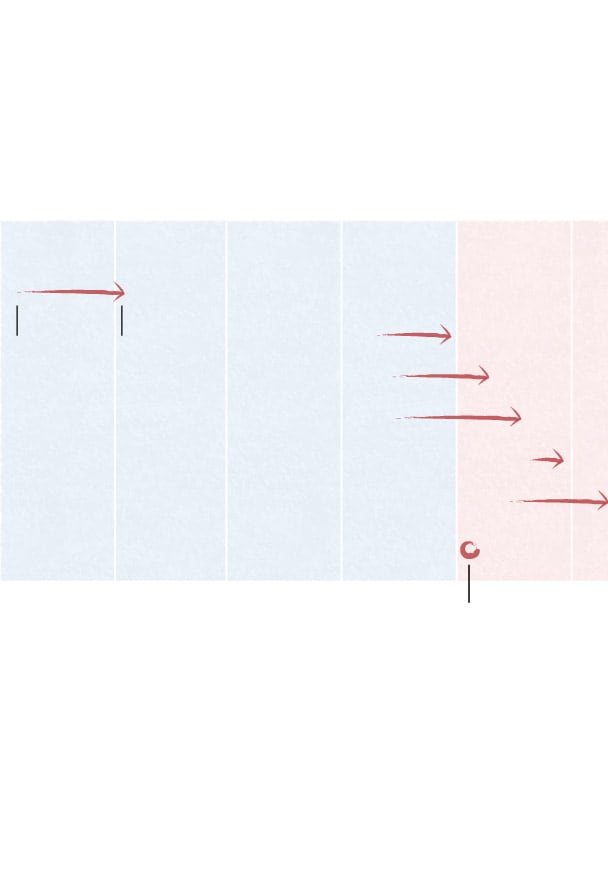
Michigan’s shift from ‘12 to ’16
All six regions became more Republican in 2016. The Middle and Thumb flipped red.
Democrat won by
300k votes
GOP won
by 100k
Detroit Suburbs
2012
margin
2016
margin
U.P. and North
Statewide 2016 margin
In 2018, Democrats won every statewide Michigan race by single digits, improving in western Michigan and the Detroit suburbs and losing some smaller towns by less than Clinton had.
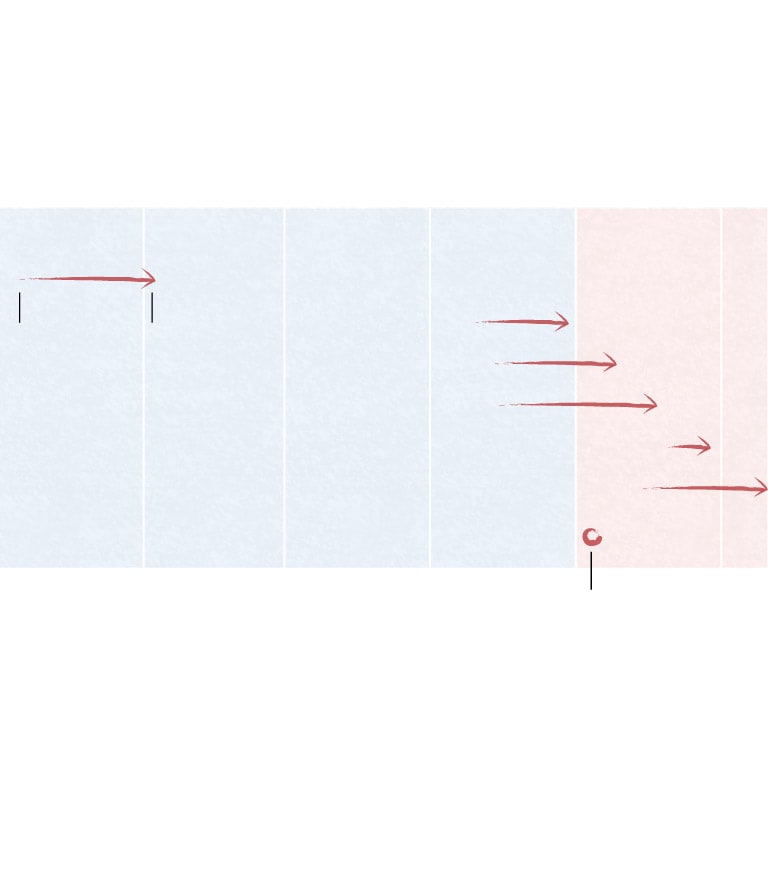
How Michigan shifted from 2012 to 2016
All six regions became more Republican in 2016. The Middle and Thumb flipped red.
Democrat won by
300k votes
GOP won
by 100k
Detroit Suburbs
2012
margin
2016
margin
U.P. and North
Statewide 2016 margin
In 2018, Democrats won every statewide Michigan race by single digits, improving in western Michigan and the Detroit suburbs and losing some smaller towns by less than Clinton had.
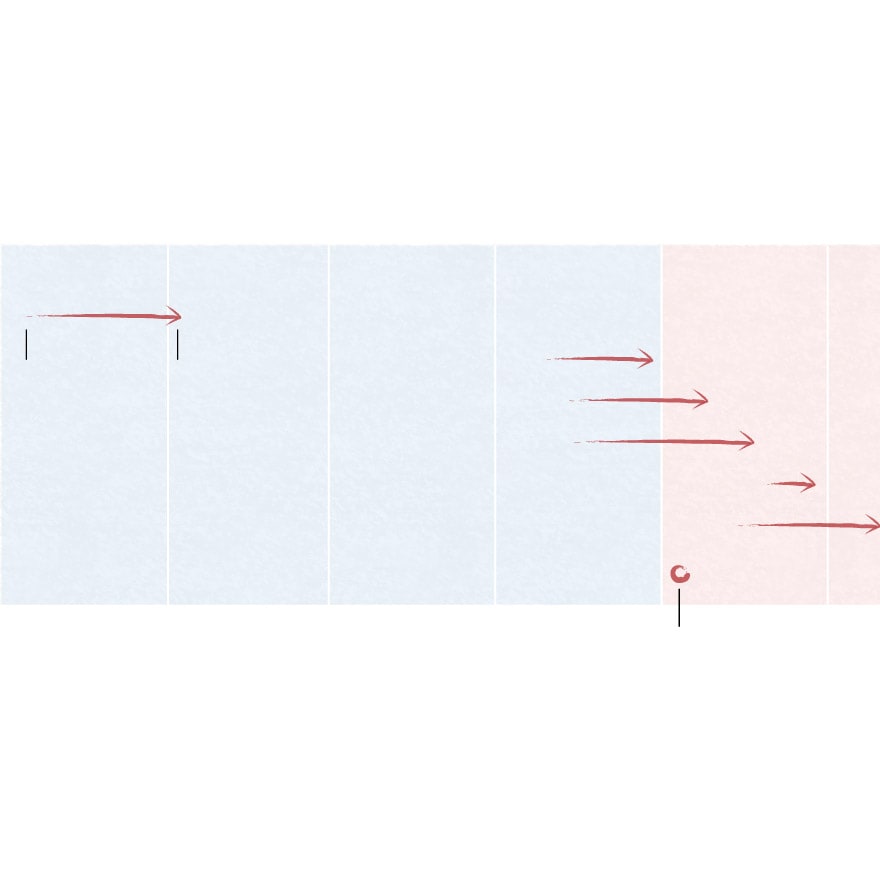
How Michigan shifted from 2012 to 2016
All six regions became more Republican in 2016. The Middle and Thumb flipped red.
Democrat won by
300k votes
GOP won
by 100k
Detroit Suburbs
2012
margin
2016
margin
U.P. and North
Statewide 2016 margin
In 2018, Democrats won every statewide Michigan race by single digits, improving in western Michigan and the Detroit suburbs and losing some smaller towns by less than Clinton had.
To make sense of Michigan, we break it down into six distinct political “states,” with different demographics and voting histories. Detroit (we’re including the city and the rest of surrounding Wayne County) is a Democratic stronghold with some conservative pockets. Detroit Suburbs, the vote-rich counties of Oakland and Macomb, have been trending in different directions.
The Thumb of eastern Michigan, over to the cities along Interstate 75, moved dramatically away from Democrats in 2016. The West, once the GOP’s strongest base, has shown signs of slippage. The rural Upper Peninsula and North have moved ever more decisively toward Republicans, while counties and towns in the Middle of the state are still up for grabs.
This is the first in our new series breaking down the key swing states of 2020, showing how electoral trends played out over the past few years and where the shift in votes really mattered.
Detroit
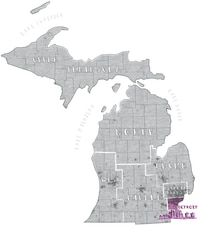

Still the most vote-rich county in the state, Wayne’s population peaked more than 50 years ago along with the city of Detroit. The troubled city’s decline has slowed since the end of the 2008-2009 recession, but it remains downright hostile to Republicans. An office the party opened there in 2013 now sits empty, and John James, a Black veteran who may be the strongest Republican Senate candidate in Michigan since 2000, won just 9,118 votes across the city in his 2018 bid.
Most of the county’s voters actually live outside the city, and some Whiter communities, such as the suburb of Livonia, backed Trump in 2016. But any Democratic statewide win depends on a massive majority from Wayne County. Barack Obama won the county by 382,032 votes in 2012, while Hillary Clinton won it by just 290,388. Had her margin declined by half that amount, she’d have carried the state, and Democrats have focused intensely on Wayne ever since, from finding more voters in the largely Arab American city of Dearborn to revving up turnout in Detroit.
2016 vote totals
- Donald Trump: 229,337
- Hillary Clinton: 519,725
Counties included: Wayne
Detroit Suburbs
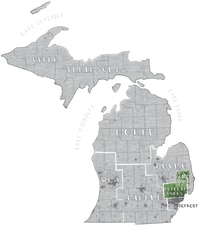

The counties just north of Detroit grew as the city declined, with places such as Sterling Heights, Southfield and Warren growing from small towns to busy suburbs. In the 1980s, demographers looking for “Reagan Democrats” (working-class voters who left their ancestral party to support the 40th president) often landed here, and Democrats struggled not only to win them but to lose them by less than double digits. And for a long time, Macomb and Oakland counties voted about the same way — within single digits of each other from 1980 to 2012.
That changed in 2016, as more diverse and more highly educated Oakland backed Clinton by eight points while Macomb backed Trump by 12. In Oakland County, at least 46 percent of residents hold college degrees; in Macomb, it’s just 25 percent. The counties diverged again in 2018, when Democrats swept the state, the top of the ticket carrying Oakland by 100,000 votes and squeaking by in Macomb by around 10,000 votes.
2016 vote totals
- Donald Trump: 513,727
- Hillary Clinton: 519,270
Counties included: Oakland, Macomb
The Middle
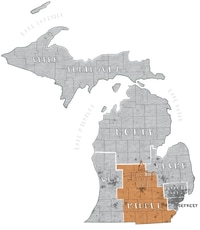
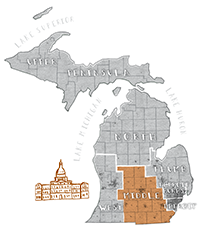
Washtenaw County, home to Ann Arbor, Ypsilanti and the University of Michigan, is now the most heavily Democratic in the state. Ingham, home to the state capitol of Lansing and Michigan State University, is a smaller but reliable stronghold. The rest of the region leans to the right, but Trump dominated it in 2016, adding thousands of votes to traditional Republican margins in suburban counties such as Livingston and flipping Calhoun, Eaton and Monroe.
Before the pandemic, the president had started tending to this part of the state, holding a rally in Battle Creek. Democratic Rep. Elissa Slotkin, who flipped a House seat that stretches from Lansing toward Detroit, reversed some of those 2016 trends, but the sort of ultra-grass-roots campaigning she depended on was waylaid by the pandemic. Republicans have resumed door-knocking in the region, and the state, though neither presidential candidate can really campaign there.
2016 vote totals
- Donald Trump: 458,039
- Hillary Clinton: 430,525
Counties included: Montcalm, Gratiot, Ionia, Clinton, Shiawassee, Barry, Eaton, Ingham, Livingston, Calhoun, Jackson, Washtenaw, Branch, Hillsdale, Lenawee, Monroe
The Thumb

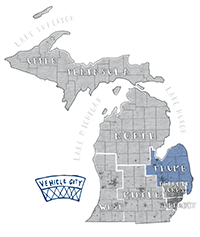
Michigan’s “cottage country” exists wherever there are lakes, and much of it is here, in places with ready access to Lake Huron. Farther from the shore, along the interstate that connects cities such as Flint and Saginaw to the Detroit area, towns have been losing population and moving to the right. Until 2016, Democrats tended to run up the score in those cities and minimized their losses in rural counties, carrying the region.
That changed in 2016, as nearly every precinct outside those cities and some small towns went for Trump — Port Huron, a lake town where Students for a Democratic Society composed their manifesto in 1962, was the only other dot of blue. In 2015, Trump’s first political trip to Michigan put him in Saginaw, and Democrats’ late panic over the state basically skipped the region. Democrats haven’t ignored the Thumb or the Saginaw Bay region this cycle, with Joe Biden making one of his last in-person campaign stops in Flint.
2016 vote totals
- Donald Trump: 278,407
- Hillary Clinton: 222,959
Counties included: Bay, Saginaw, Tuscola, Huron, Sanilac, St. Clair, Lapeer, Genesee
The West


The state’s conservative heartland was settled largely by Dutch immigrants, the most famous of them — the DeVos family — bankrolling Republican politics for decades. It has had a complicated relationship with Donald Trump. He lost the region to Ted Cruz in the March 2016 primary and didn’t much improve on Mitt Romney’s 2016 performance here even as he blew away typical Republican margins across much of the state. The region’s two most populous counties, Kent and Ottawa, were among the only parts of Michigan that shifted left, led by movement in their biggest city, Grand Rapids.
That trend continued in 2018, as Democrat Gretchen Whitmer dramatically improved on the party’s margins in western Michigan. Barring a complete collapse of his campaign, the president will win the region, but more losses in places such as Kalamazoo and Holland would make it close and echo suburban declines in other parts of the state.
2016 vote totals
- Donald Trump: 466,203
- Hillary Clinton: 373,958
Counties included: Muskegon, Ottawa, Kent, Allegan, Van Buren, Berrien, Cass, Oceana, Newaygo, St. Joseph, Kalamazoo
Upper Peninsula and North

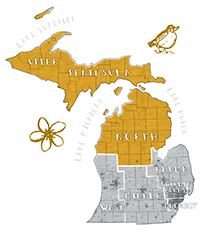
Thinly populated and socially conservative, the Upper Peninsula makes up nearly a third of Michigan’s territory but just a fraction of its vote. Unlike some other parts of the state, its shift to the right continued in 2018; Democratic Sen. Debbie Stabenow, who’d won every county in the U.P. in her first two reelections, held onto only its two most liberal counties. (Only Marquette, home to Northern Michigan University, is reliably blue.)
But “northern Michigan” starts far below the Mackinac Bridge, and apart from some towns around Grand Traverse Bay, the region votes Republican by a landslide. Just three of the “mitt’s” northern counties — Isabella, Lake and Manistee — flipped from blue to red in 2016, because the rest were red already.
2016 vote totals
- Donald Trump: 334,163
- Hillary Clinton: 202,810
Counties included: Gogebic, Ontonagon, Houghton, Keweenaw, Baraga, Iron, Marquette, Dickinson, Menominee, Delta, Alger, Schoolcraft, Luce, Mackinac, Chippewa, Emmet, Cheboygan, Presque Isle, Charlevoix, Antrim, Leelanau, Otsego, Montmorency, Alpena, Benzie, Grand Traverse, Kalkaska, Crawford, Oscoda, Alcona, Manistee, Wexford, Missaukee, Roscommon, Ogemaw, Iosco, Mason, Lake, Osceola, Clare, Gladwin, Arenac, Mecosta, Isabella, Midland






